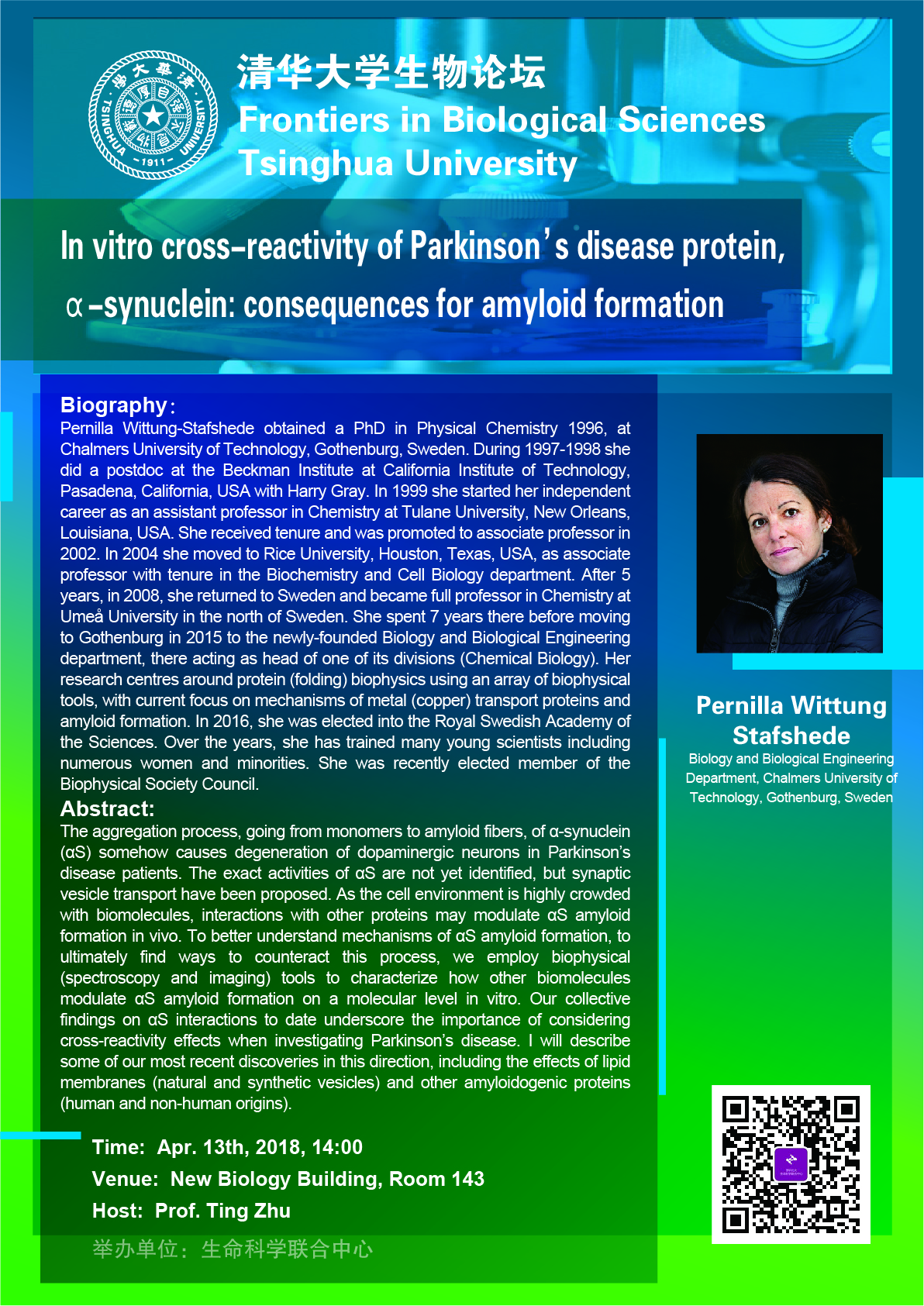In vitro cross-reactivity of Parkinson’s disease protein, a-synuclein: consequences for amyloid formation
Time: Apr. 13th, 2018, 14:00
Venue: New Biology Building, Room 143
Host: Prof. Ting Zhu

Pernilla Wittung Stafshede, Biology and Biological Engineering Department, Chalmers University of Technology, Gothenburg, Sweden
Biography:
Pernilla Wittung-Stafshede obtained a PhD in Physical Chemistry 1996, at Chalmers University of Technology, Gothenburg, Sweden. During 1997-1998 she did a postdoc at the Beckman Institute at California Institute of Technology, Pasadena, California, USA with Harry Gray. In 1999 she started her independent career as an assistant professor in Chemistry at Tulane University, New Orleans, Louisiana, USA. She received tenure and was promoted to associate professor in 2002. In 2004 she moved to Rice University, Houston, Texas, USA, as associate professor with tenure in the Biochemistry and Cell Biology department. After 5 years, in 2008, she returned to Sweden and became full professor in Chemistry at Umeå University in the north of Sweden. She spent 7 years there before moving to Gothenburg in 2015 to the newly-founded Biology and Biological Engineering department, there acting as head of one of its divisions (Chemical Biology). Her research centres around protein (folding) biophysics using an array of biophysical tools, with current focus on mechanisms of metal (copper) transport proteins and amyloid formation. In 2016, she was elected into the Royal Swedish Academy of the Sciences. Over the years, she has trained many young scientists including numerous women and minorities. She was recently elected member of the Biophysical Society Council.
Abstract:
The aggregation process, going from monomers to amyloid fibers, of a-synuclein (αS) somehow causes degeneration of dopaminergic neurons in Parkinson’s disease patients. The exact activities of aS are not yet identified, but synaptic vesicle transport have been proposed. As the cell environment is highly crowded with biomolecules, interactions with other proteins may modulate αS amyloid formation in vivo. To better understand mechanisms of αS amyloid formation, to ultimately find ways to counteract this process, we employ biophysical (spectroscopy and imaging) tools to characterize how other biomolecules modulate αS amyloid formation on a molecular level in vitro. Our collective findings on αS interactions to date underscore the importance of considering cross-reactivity effects when investigating Parkinson’s disease. I will describe some of our most recent discoveries in this direction, including the effects of lipid membranes (natural and synthetic vesicles) and other amyloidogenic proteins (human and non-human origins).

